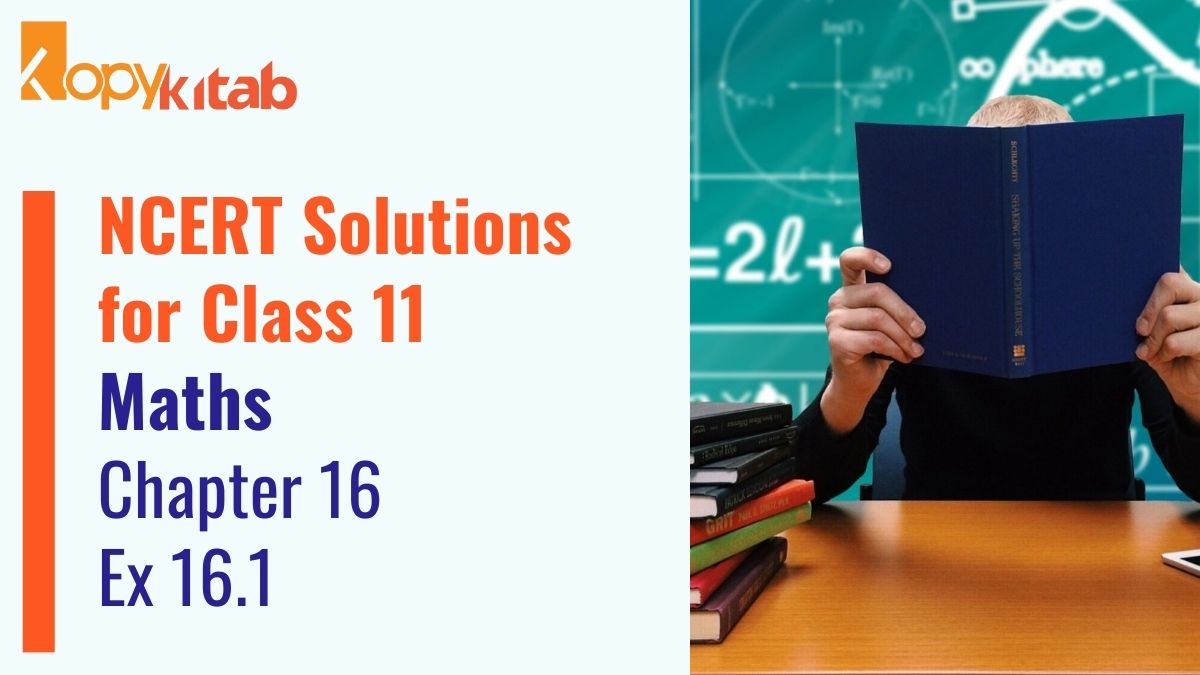NCERT Solutions for Class 11 Maths Chapter 16 Ex 16.1: Ace your Class 11 Maths exam with the NCERT Solutions for Class 11 Maths Chapter 16 Ex 16.1. Probability, contains solutions for Exercise 16.2 questions here. The reason for practising NCERT Solutions is always to score more in the final exam.
Download NCERT Solutions For Class 11 Maths Chapter 16 Ex 16.1 Free PDF using the download link given in the blog. To know more, read the whole blog.
Download NCERT Solutions for Class 11 Maths Chapter 16 Ex 16.1 PDF
NCERT Solutions for Class 11 Maths Chapter 16 Ex 16.1
We have provided all the important above in the article regarding the CBSE NCERT Solutions For Class 11 Maths Chapter 16 Ex 16.1. If you have any queries, you can mention them in the comment section.
FAQs on NCERT Solutions For Class 11 Maths Chapter 16 Ex 16.1
Describe the sample space if a coin is tossed three times.
A coin has two faces: head (H) and tail (T). When a coin is tossed three times, the total number of possible outcomes is 23 = 8 Thus, when a coin is tossed three times, the sample space is given by: S = {HHH, HHT, HTH, HTT, THH, THT, TTH, TTT}
Describe the sample space if a die is thrown two times.
When a die is thrown, the possible outcomes are 1, 2, 3, 4, 5, or 6. When a die is thrown two times, the sample space is given by S = {(x, y): x, y = 1, 2, 3, 4, 5, 6} The number of elements in this sample space is 6 × 6 = 36, while the sample space is given by: S = {(1, 1), (1, 2), (1, 3), (1, 4), (1, 5), (1, 6), (2, 1), (2, 2), (2, 3), (2, 4), (2, 5), (2, 6), (3, 1), (3, 2), (3, 3), (3, 4), (3, 5), (3, 6), (4, 1), (4, 2), (4, 3), (4, 4), (4, 5), (4, 6), (5, 1), (5, 2), (5, 3), (5, 4), (5, 5), (5, 6), (6, 1), (6, 2), (6, 3), (6, 4), (6, 5), (6, 6)}
One die of red colour, one of white colour and one of blue colour are placed in a bag. One die is selected at random and rolled, its colour and the number on its uppermost face is noted. Describe the sample space.
A die has six faces that are numbered from 1 to 6, with one number on each face. Let us denote the red, white, and blue dices as R, W, and B respectively. Accordingly, when a die is selected and then rolled, the sample space is given by S = {R1, R2, R3, R4, R5, R6, W1, W2, W3, W4, W5, W6, B1, B2, B3, B4, B5, B6}
An experiment consists of tossing a coin and then throwing it second time if a head occurs. If a tail occurs on the first toss, then a die is rolled once. Find the sample space.
A coin has two faces: head (H) and tail (T). A die has six faces that are numbered from 1 to 6, with one number on each face. Thus, in the given experiment, the sample space is given by S = {HH, HT, T1, T2, T3, T4, T5, T6}
A die is thrown repeatedly until a six comes up. What is the sample space for this experiment?
In this experiment, six may come up on the first throw, the second throw, the third throw and so on till six is obtained. Hence, the sample space of this experiment is given by S = {6, (1, 6), (2, 6), (3, 6), (4, 6), (5, 6), (1, 1, 6), (1, 2, 6), … , (1, 5, 6), (2, 1, 6), (2, 2, 6), … , (2, 5, 6), … ,(5, 1, 6), (5, 2, 6), …}
A die is rolled. Let E be the event “die shows 4” and F be the event “die shows even number”. Are E and F mutually exclusive?
When a die is rolled, the sample space is given by S = {1, 2, 3, 4, 5, 6} Accordingly, E = {4} and F = {2, 4, 6} It is observed that E ∩ F = {4} ≠ Φ Therefore, E and F are not mutually exclusive events.
